Plecostomus catfish belong to the Loricariidae family. These unique catfish aid aquarists with algae control in their aquariums.
They have armored plates covering most of their bodies and suckers surrounding their mouths, which aid in their feeding habits.
The common plecostomus – or “pleco” as most people refer to them – represents the most popular addition to community aquariums.
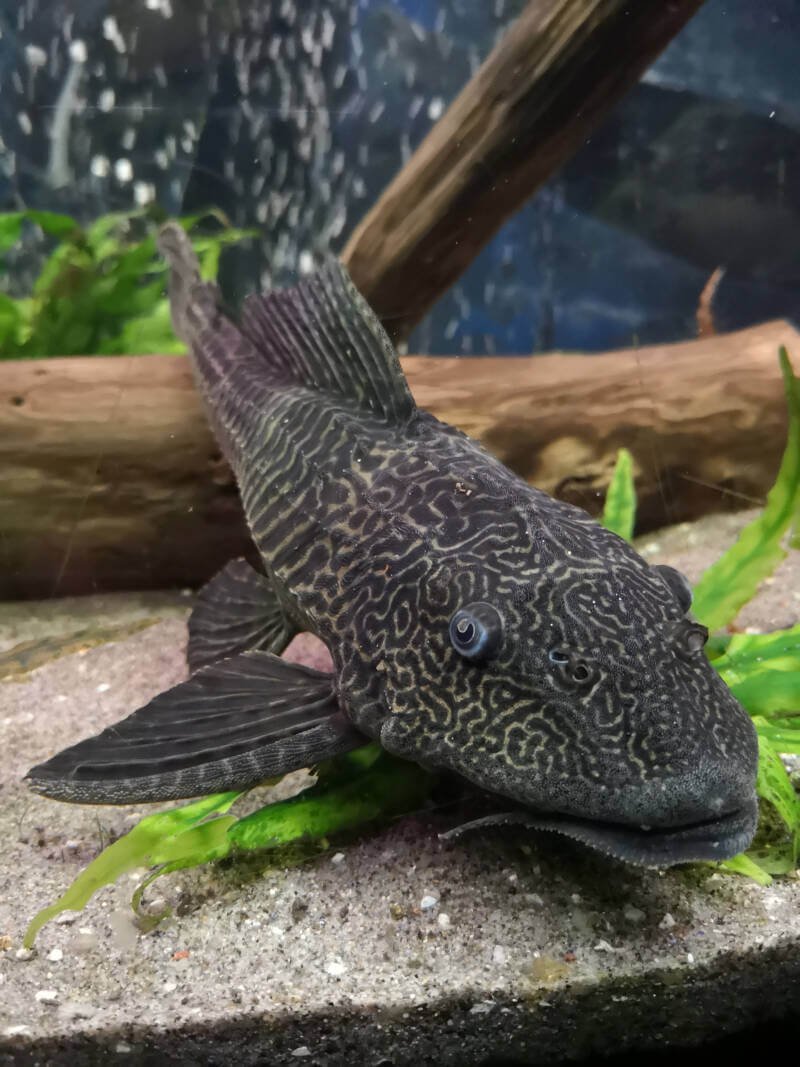
Hypostomus plecostomus look simple enough to manage when presented as juveniles in the pet store. And they are – until they reach adult size.
Good thing there are over 500 varieties of plecos to choose from.
Scientists and breeders designate the types with designations of “L” or “LDA” followed by numbers to differentiate the various colors and patterns available – with new varieties appearing every day.)
Plecos represent a moderate challenge for aquarists. The type you select determines your tank size (which represents the greatest challenge).
These easy-going bottom-dwellers add a touch of whimsy to your tank – so long as you prepare for that aquarium size.
At a Glance
| Tank Size: | 100 gallons (450 l) |
| School Size: | should be housed alone (bristlenose are an exception) |
| Temperature: | 74-80°F (23-27°C) |
| Lifespan: | 10-15 years |
| Size: | 20-24 inches (51-61 cm) |
| pH: | 5.5-8.0 |
| Hardness: | 3-10 dH |
| Ammonia: | 0 ppm |
| Nitrite: | 0 ppm |
| Nitrate: | <20 ppm |
In this article
In the Wild
Most of the plecos, including Hypostomus plecostomus, come from Central and South America.
They prefer fast-moving rivers and streams where that suckermouth adaptation comes in handy.
They attach themselves to rocks and submerged tree branches, filtering nutrients from the water. The suckermouth allows plecos to breathe, feed, and stay in place – all at once!

That simple evolutionary trait adapts them to a wide range of water conditions.
They inhabit acidic black waters, brackish estuaries, and even underground pools.
Plecos have a nocturnal existence, spending the majority of the daylight hours hiding.
Four rows of large, bony plates protect against potential predators, leaving their bellies soft and exposed. (Which is why they hang on for dear life!)
For extra defense, they carry spines in their dorsal and ventral fins.
Whenever a pleco senses a potential threat, they swing the spines forward. This makes the fish appear larger, and it also allows them to wedge tighter into their chosen hiding place.
Popular Types of Plecostomus

Hypostomus plecostomus look simple enough to manage when presented as juveniles in the pet store. And they are – until they reach adult size.
Good thing there are over 500 varieties of plecos to choose from.
Scientists and breeders designate the types with designations of “L” or “LDA” followed by numbers to differentiate the various colors and patterns available – with new varieties appearing every day.
Plecos come in a WIDE range of pricing. Hypostomus plecostomus comes in at a reasonable $3, especially as juveniles.
As you go up in species rarity, though, you climb to $60 and even $300 per fish. You’ll have to decide your price point carefully.
1. Bristlenose plecostomus (Ancistrus spp.)
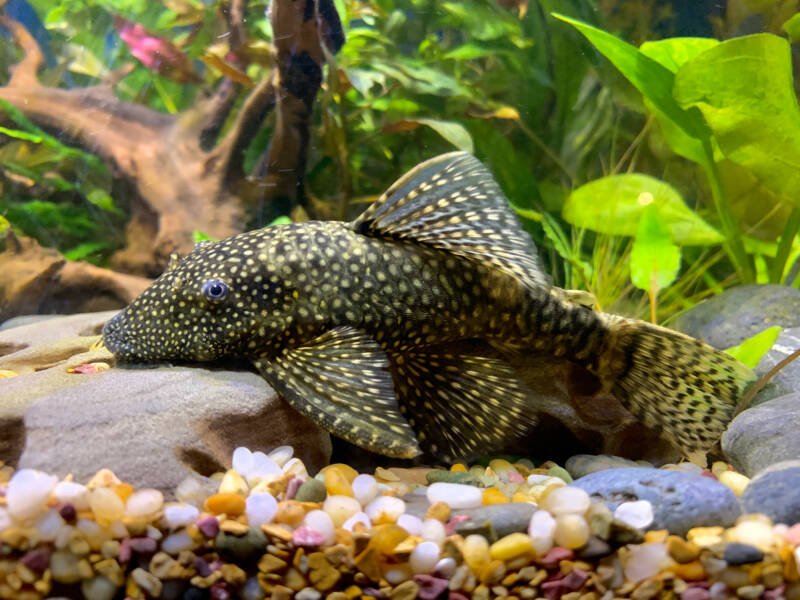
Bristlenose pleco work well for aquarists that don’t want to manage a giant aquarium. They get to an adult length of around four to six inches (10-15 cm).
These species sport “tentacles” around the head and come in various colors and patterns, including albino.
Just avoid any other bottom-dwellers – they refuse to share space.
2. Zebra plecostomus (Hypancistrus zebra)
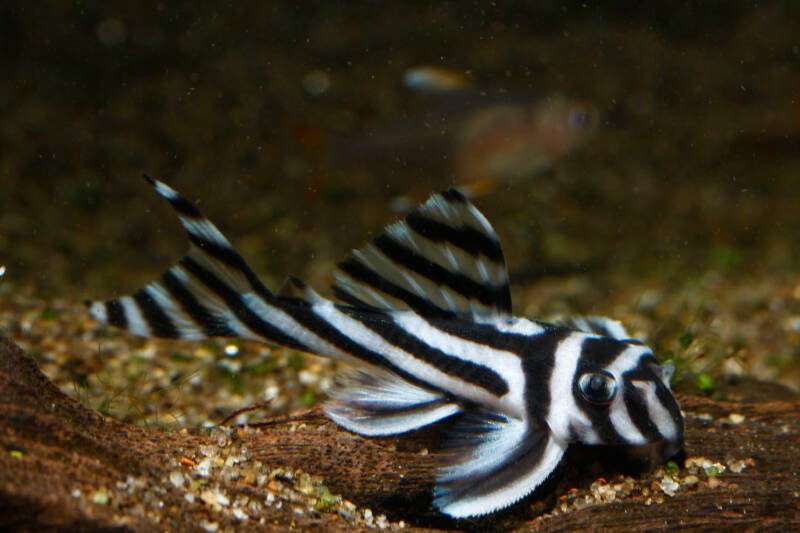
Zebra plecostomus live up to their name: they have horizontal black and white stripes on their heads, shifting to vertical stripes along their bodies. They top around 3.5 inches (9 cm) as adults.
While on the small side, they also happen to be one of the most expensive types of pleco on the market.
3. Clown plecos (Panaqolus Marcus)
Clown plecos sport varying patterns of stripes along their sides.
They don’t get very long – about 3.5 inches (9 cm) – so you can get away with a smaller tank size.
Aquarists love these suckermouth catfish as their colors change as they age.
4. Royal plecos (Panaque nigrolineatus)

Royal plecos HAVE to have driftwood in their tanks. They have symbiotic bacteria in their GI tract that allows them to digest the lignin in the wood.
You’ll need a hefty aquarium, though, as they reach 17 inches (43 cm) at adult length.
5. Sailfin plecostomus (Pterygoplichthys gibbiceps)
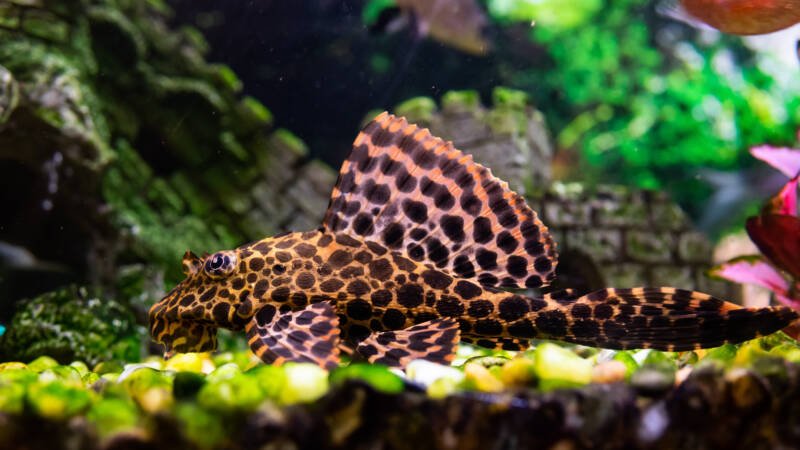
Sailfin plecostomus split the difference between common and smaller species, topping out around 12 inches (31 cm).
Their dorsal fin extends high along their back, creating a “sail” appearance.
Size – Larger than Advertised
Common plecos show up in pet stores as juveniles about 3 inches (7.6 cm) long.
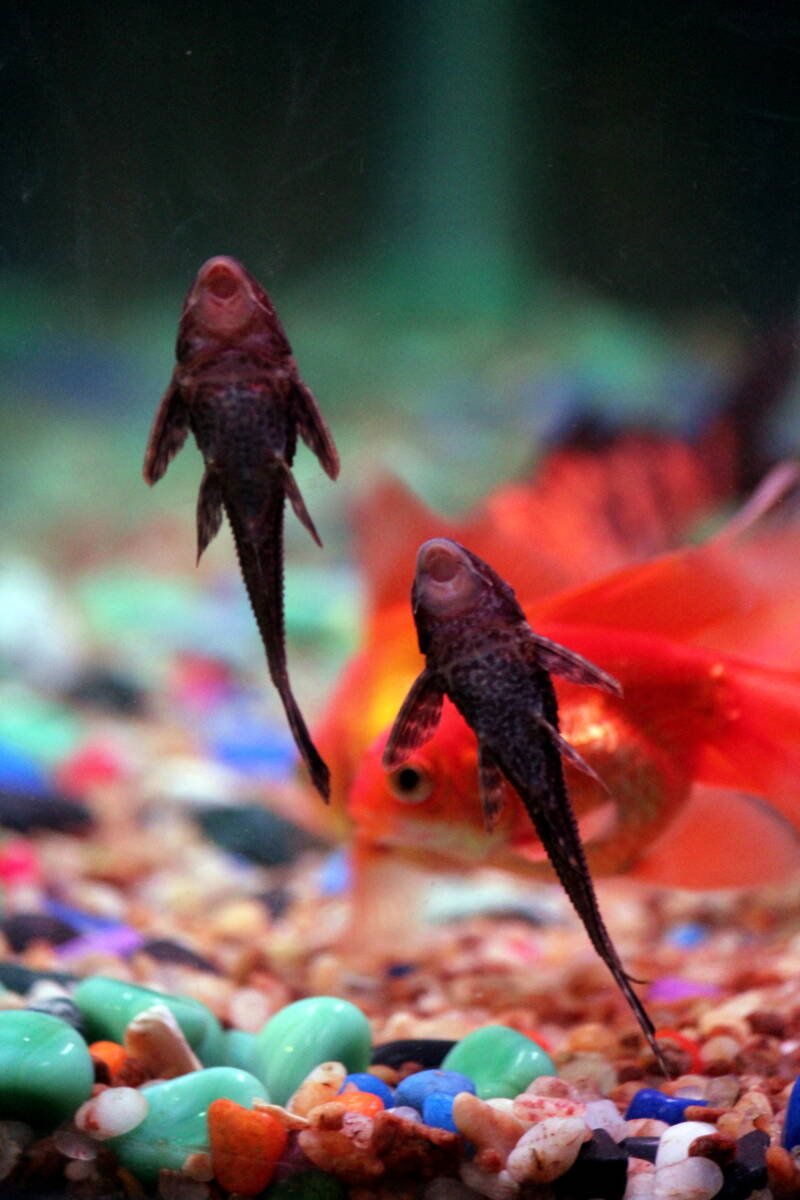
Aquarists bring them home, thinking the little pleco will fit into their community tank without a problem. And then their pleco grows – and grows – and GROWS.
Common plecos top out at 24 inches (61 cm) before they finish growing!
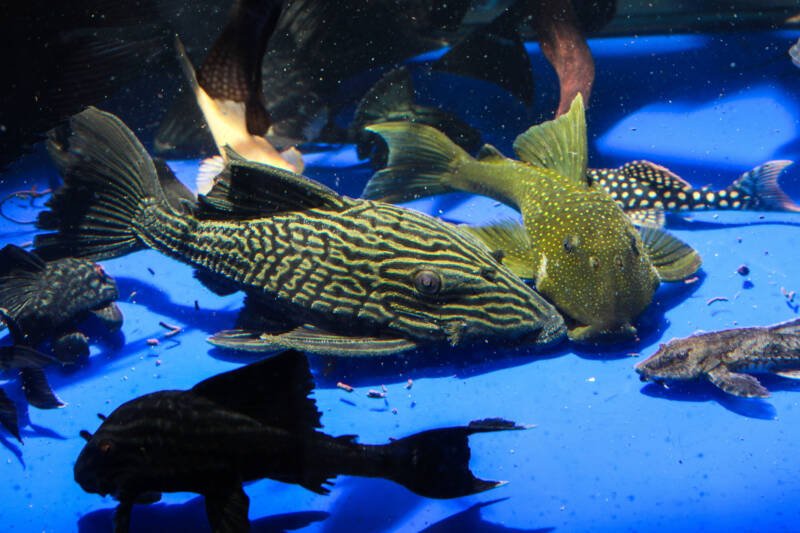
If you haven’t planned ahead with your aquarium size, they’ll quickly eclipse the space. This can lead to aggression issues – not to mention an uncomfortable fish.
Bristlenose, rubber-lip, and clown plecos stay a much more manageable size: about 4-6 inches (10-15 cm).
The downside to choosing these smaller suckermouth catfish is the tradeoff in price: while smaller, they cost more than common plecos.
Lifespan
On average, plecos live around 10-15 years. That assumes, of course, that you provide the proper tank size and quality water conditions.
If you stay on top of things, giving your pleco the utmost care, you might see them make it to 20 years.
Behavior
Plecos have an aggressive streak that gets worse as the fish ages. They set up a territorial perimeter they patrol on their nightly rounds.
Due to the amount of space the common pleco requires, it’s best to stick to just ONE pleco per tank.
If you have plenty of space in your home and money to burn, you CAN keep more than one.
The tank size is the most significant limiting factor when it comes to these suckermouth catfish. For instance, two common plecos require a 300-gallon (1136 l) tank.
For the smaller types of plecos, you CAN keep them together. You’ll want to have a higher ratio of females to males to limit some of the aggression, though.
And make sure you have enough hiding places for everyone to get their own cave.
You won’t see plecos shoaling together (assuming you have enough aquarium space for a pair or more).
They’ll each set up their own little space and expect the other to respect the borders. If you want a more social catfish, skip plecos.
Tank Setup
The type of pleco you bring home determines the tank size you’ll need to have on-hand.
Hypostomus plecostomus needs LOTS of room to reach that fantastic adult length of 24 inches (61 cm). You can’t go any smaller than 100 gallons (379 l).
Different types of plecos have different space needs, though.
Depending on your preferences, you might get out of hefty tank needs (or you could end up springing for even LARGER aquariums):
- Bristlenose: 25 gallons (95 l)
- Clown: 30 gallons (114 l)
- Gold nugget: 50 gallons (189 l)
- Royal: 125 gallons (473 l)
- Sailfin: 125 gallons (473 l)
- Snowball: 30 gallons (114 l)
- Zebra: 30 gallons (114 l).
Many people pick up plecos to help scavenge waste from their tank. In addition to snacking on algae, plecos WILL pick up scraps and debris from the substrate.
However, they also ADD to that waste. Make sure you have a properly-sized filter on your tank.
Don’t neglect the water current, either. Remember, these suckermouths enjoy a strong flow through the tank.
If your filter isn’t powerful enough, add air stones to increase the current within your aquarium.
Decorating the Plecostomus Tank

While often sold as algae-eaters, plecostomus enjoy snacking on aquarium plant life. The greenery can offer additional hiding places, too.
But you’ll want to make sure the plants can withstand any fish assaults without ending up too depleted:
- Amazon frogbit
- Amazon sword
- Hornwort
- Java moss
- Water wisteria
Plecos have nocturnal habits. Odds are, your pleco will spend most of the daylight hours hiding out in the décor.

That means keeping them as comfortable as possible. Provide driftwood, caves, and hollow logs to offer a sense of security.
Water Conditions

Plecos, whether purchased from a breeder or wild-caught, prefer the tropical lifestyle.
They won’t tolerate temperatures below 74°F (23°C). Having a quality heater in your aquarium, such as an Aqueon Aquarium Heater, will keep that temperature at the perfect 74-80°F (23-27°C) range.
The common pleco frequents the Amazon River Basin. Those waters are soft and acidic.
You should try to replicate the environment as closely as possible. That means a pH between 5.5-7.0 and a water hardness around 3-10 dH.
Plecostomus in Communities
While plecostomus gain some aggressive habits the larger and older they get, they have an underlying temperament that works well in community aquariums.
You need to take a few precautions, but they play well with others (for the most part).
Tank Mates
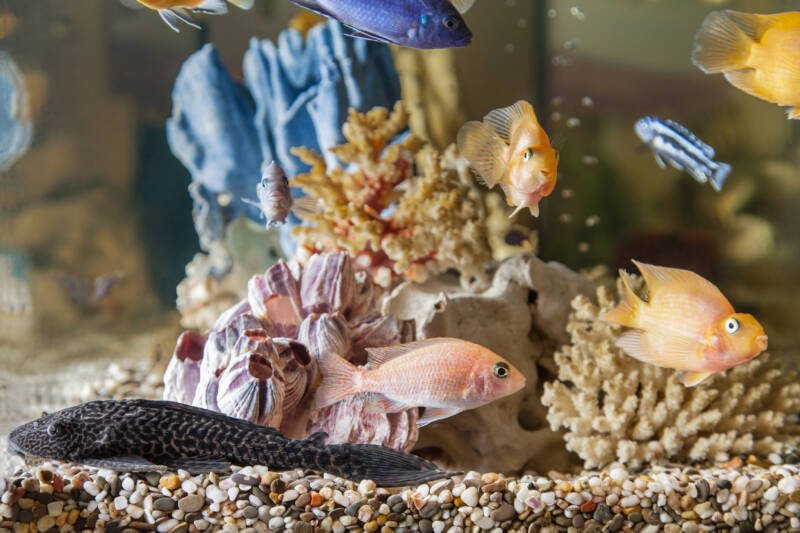
So long as their tank mates are peaceful and too small to swallow them, you have your choice of the freshwater fish catalog.
But watch out for fish small enough to fit in your pleco’s mouth. (They don’t mean to suction them up, but accidents happen)
Some of your best pleco matches include:
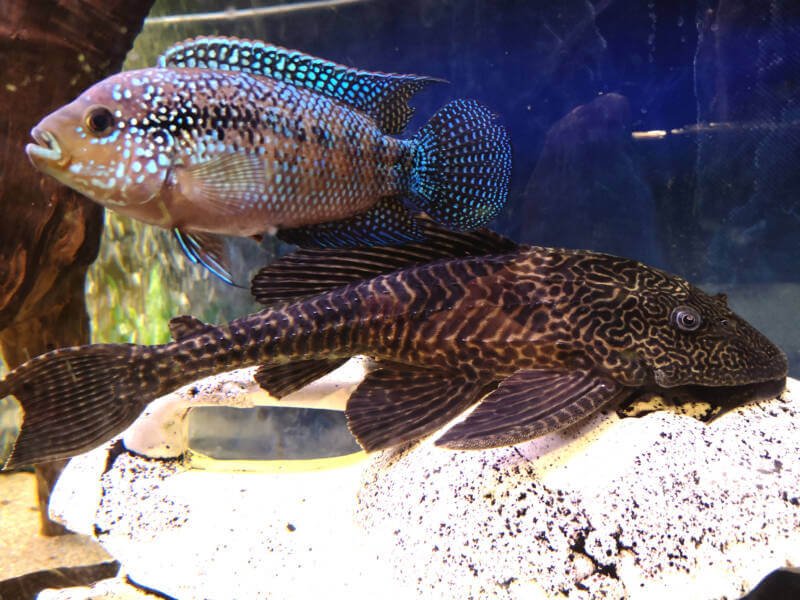
Incompatible Species
When it comes to cichlids, discus and freshwater angelfish don’t work well with plecos.
For whatever reason, plecos have a fascination with nipping at these larger cichlids, which causes problems all around.
You may glimpse your pleco adhered to the side of a tank mate, particularly flat or round-bodied fish, such as goldfish.
This isn’t aggression; your pleco’s using that suckermouth to scrape the slime coat off the fish. It’s a sign your pleco’s starving, though, which is a different problem.
Feeding Your Plecostomus
Pet stores like to advertise plecostomus as “algae-eaters”. And while it’s true these suckermouth catfish cruise the tank in search of algae and other debris, they’re omnivores and need a carefully balanced diet to stay healthy.
No tank provides enough algae to sustain an adult pleco.
If you don’t see a happy, rounded belly (or you notice your pleco hanging from another fish), you need to provide an algae supplement to round things out:
- Algae Rounds
- Aqueon Bottom Feeder Tablets
- Shrimp Pellets
Plecostomus have long intestines, allowing them to process fibrous materials. That includes driftwood.
So while it’s important to keep those woody hideaways, you also need them as a source of roughage.
Don’t skimp on the protein aspects of the diet, either. Plenty of plecos have carnivorous tendencies (do your research).
Frozen bloodworms or Repashy Gel Foods work well, as they’ll sink to the bottom for your plecos to reach.
And, of course, who doesn’t love fresh fruits and vegetables?
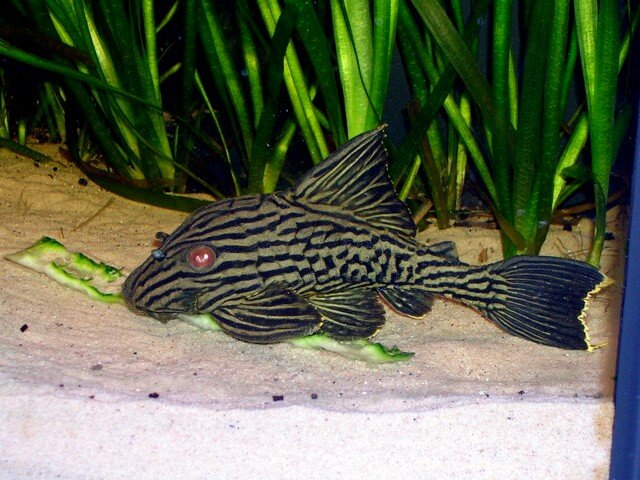
You want to avoid anything acidic (such as tomatoes), but the rest of these will make any plecostomus happy:
- Cucumber
- Lettuce
- Melon
- Peas
- Spinach
- Zucchini.
Breeding: Dad Does the Work
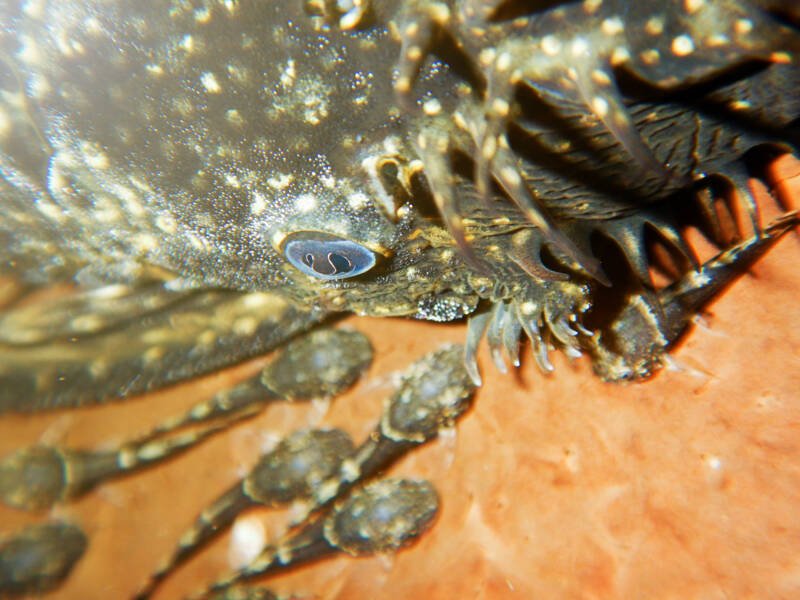
Breeding plecos isn’t the easiest undertaking in the world (though it ranks above trying to breed red tail sharks!).
They require a separate breeding tank, and you’ll need infusoria and other fry foods on-hand to keep the hatched young supplied.
Most aquarists DON’T succeed in getting their plecos to spawn. The fry have voracious appetites, putting a lot of pressure on you.
It’s not an impossible undertaking, but prepare yourself in case the attempt fails.
Male or Female?
Unless you have bristlenose plecos, trying to tell males from females gets difficult.
They ARE dimorphic fish, but the differences aren’t the easiest to pick out in other types, particularly outside of the spawning season.
The males of certain pleco species have prominent lower lips. This aids them in gathering the eggs.
Other species sport cheek spines they use for combat battles during spawning season.
And still others have thicker pectoral fins. When viewed from above, males tend to be thinner.
Bristlenose plecos make the task easier. The males of this species sport long, bristling whiskers that are absent in the female.
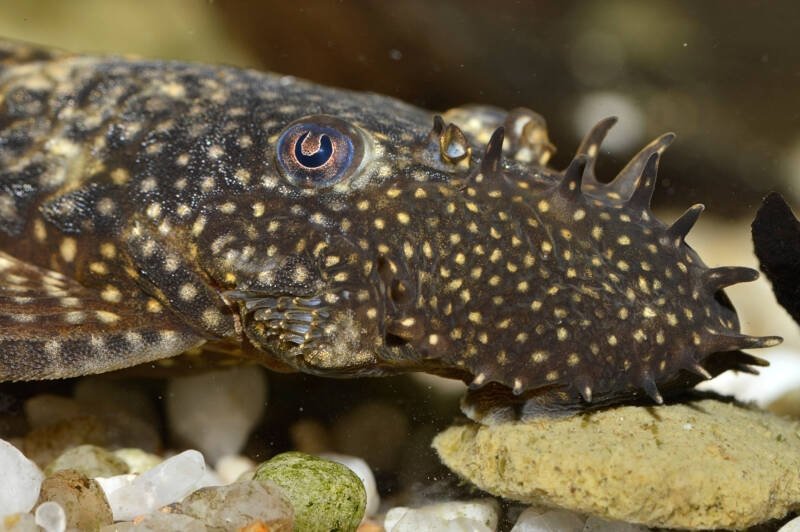
However, this difference is unique to bristlenoses. For other species, you’ll need to view A LOT of plecos to get good at telling the guys from the gals.
The Perfect Cave
To maximize your chances of a successful breeding, set up a separate tank for your pleco pair. (Make sure they have plenty of room)
Plump them up with a diet of live and frozen foods over several weeks – this stimulates the spawning instinct.
You want a variety of hiding spots for the male to choose from. He’ll select a cave and clean out the interior.
When the female’s satisfied, she’ll enter the cave and deposit the eggs. The male fertilizes them, and then he stands guard over the cave until they hatch.
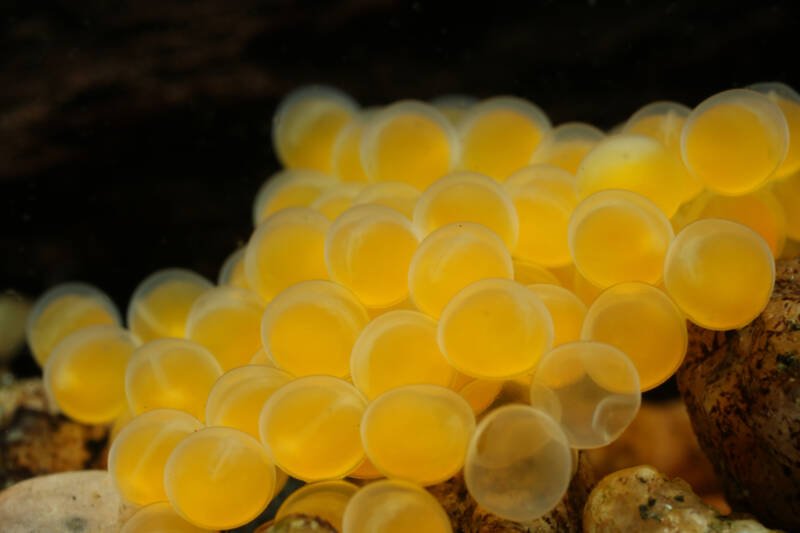
After a few days, the fry appear, and they’re STARVING. You need high-protein infusoria, micro worms, brine shrimp, and sinking tablets prepped and ready to go. Don’t overfeed, though, or you’ll end up fouling the tank.
Health and Diseases
Plecostomus have a contractable membrane over their eyes that allows them to control the amount of light that enters their eye.
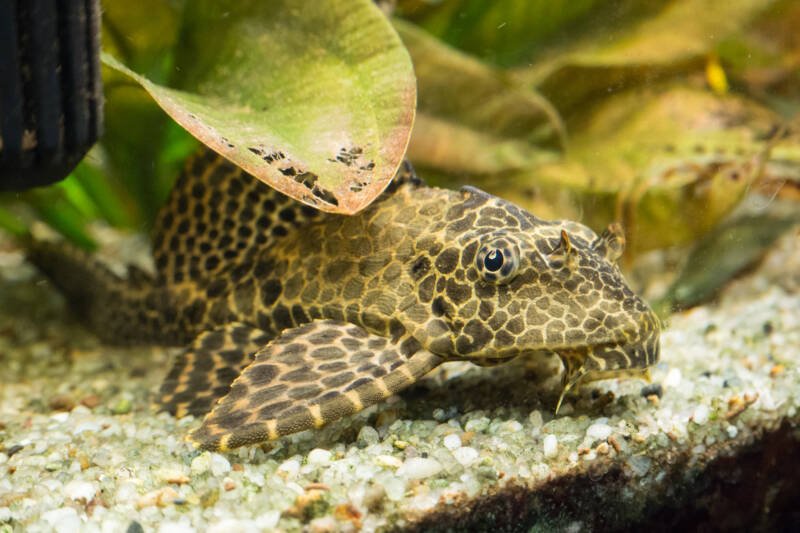
It’s a handy adaptation for nocturnal fish. And one that suffers when they develop cloudy eye.
Poor water quality allows a greyish-white slime to coat the eyes of your plecos. They’ll swim in strange patterns and may even bump into objects.
After all, that slime obscures their vision. If you don’t address the water conditions, the slime can progress to cover their entire bodies.
Separating ill plecos requires gentle handling, especially if they’re having trouble seeing.
They’ll thrust their spines forward, which can end up tangled in a fish net. You’re better off using a baited fish trap or a solid-sided container.
Plecostomus: Are They for You?
Plecos come in a WIDE range of pricing. Hypostomus plecostomus comes in at a reasonable $3, especially as juveniles.
As you go up in species rarity, though, you climb to $60 and even $300 per fish. You’ll have to decide your price point carefully.
Plecostomus top the popularity list when it comes to catfish. The suckermouth adaptation allows them to funnel algae away from décor in your tank.
Just make sure you prepare for the adult length of your chosen pleco species.
Despite the unexpected adult size, common plecostomus find their way into many community aquariums.
The unique appearance of these suckermouth catfish appeals to many aquarists. Not to mention that handy habit of clearing out algae.
Do you have a pleco in your tank?
Have you noticed it munching on the driftwood?
Which veggies are you pleco’s favorite? Let us know your stories and questions here!